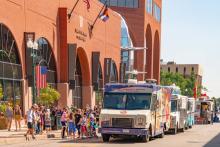
- The way we view and use our favorite places is changing significantly as technology is freeing us more and more from the need to be tied to any one particular physical location for activities like working, shopping, education, and basic communication.
- Our best places will be walkable and pedestrian friendly, be accessible by bicycle and mass transit, and be responsive to individual motor vehicle demand.
- We should assume and be prepared for many of our best places to regularly adapt to emerging trends, technology, and markets.
Unique Place Typologies and Framework
Our places will not remain or become more unique if they are held to a single model and set of standards. However, to achieve our City’s vision for these places, certain overall qualities and elements need to be widely encouraged, supported, and promoted. Although not all of these elements will be necessary or even relevant for every great place, the best will incorporate many of them. These common contributing elements include the following:
- a uniquely identifiable character and design that reinforces a sense of identity, focus and place;
- an accessible location and design that promotes the safety and convenience for all users,
- a center of activity with an integrated mix of land uses;
- a network of physical connections to support walkability, links to and alignment with the City’s trails, bike lanes, and green infrastructure network;
- an incorporation of historic buildings, features, legacy, and character (when available);
- a focus on public gathering places with areas for public interaction;
- a connection with and orientation to the outdoors, parks, public plazas, streets, and views of important natural features;
- a walkable and human scale experience with the built environment;
- an incorporation of “Third Places;” and
- a focus on arts, education, and culture.
